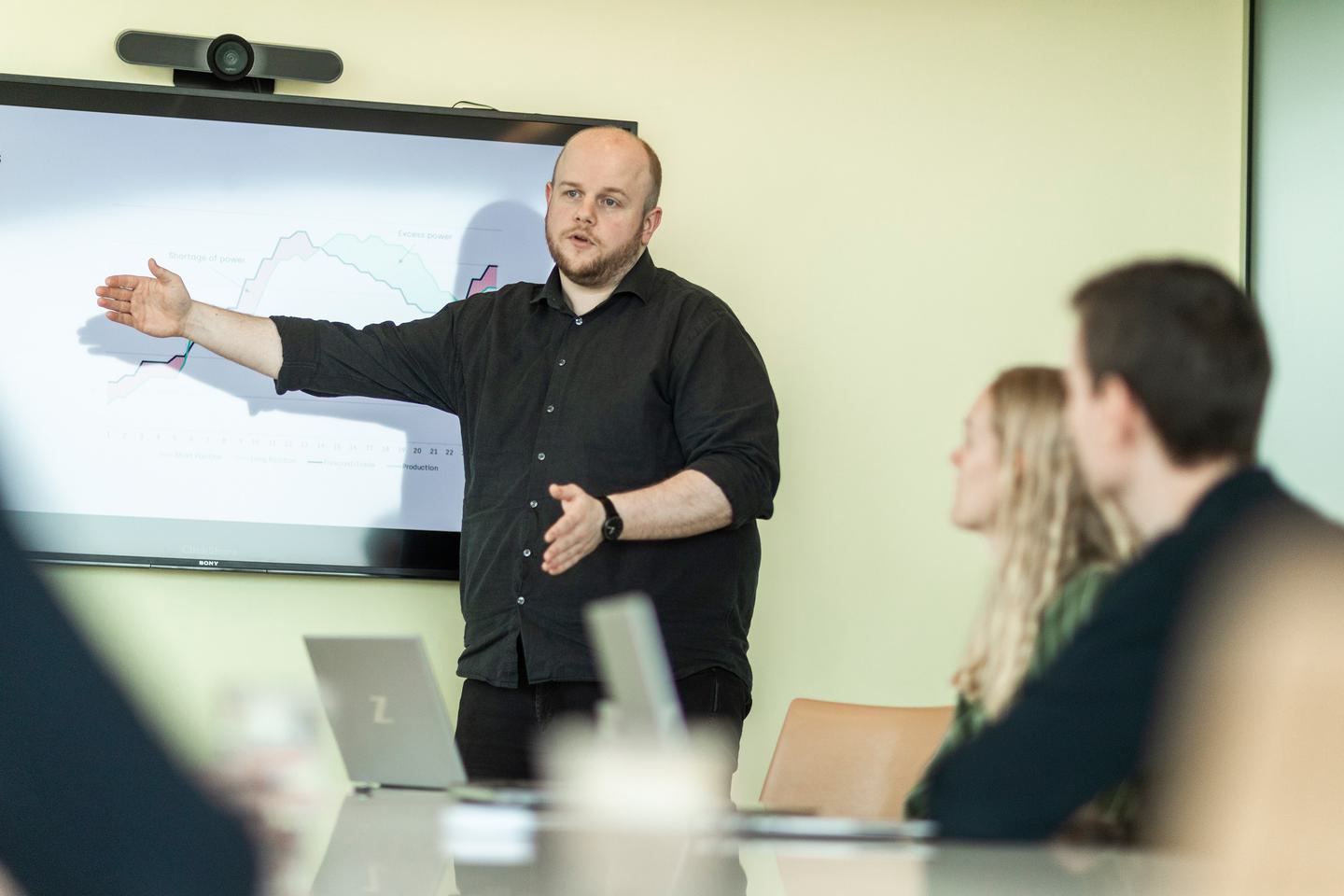Balancing Dogger Bank – the world’s largest offshore wind farm
In 2023, Dogger Bank, set to become the world’s largest offshore wind farm, produced power for the first time. An important milestone in the energy transition and for Danske Commodities as the largest offtaker of Dogger Bank when it becomes fully operational. Here, Head of Renewables Asset Management Hans-Henrik Aaen shares some insights into what it takes to balance a renewables asset with variable production like Dogger Bank.

This was not a year without challenges for the renewable energy sector. Projects faced obstacles like increasing production costs, rising interest rates and higher inflation, causing major projects all over the world to be shelved. Towards the end of the year, there was finally some good news.
One rotation can power a home for two days
The British offshore wind farm Dogger Bank produced power for the first time in October 2023. As the first 13 MW turbine started turning, electricity from the wind farm began flowing to the UK’s national grid, powering British homes and businesses. Each rotation of the 107-metre blades can produce enough energy to power an average British home for two days.
Dogger Bank is a joint venture between Equinor (40%), SSE Renewables (40%) and Vårgrønn (20%). Located 130 km off the coast of Yorkshire in the UK, the wind farm will occupy an area almost as large as Greater London and nearly twice as big as New York City. When fully complete, its 3.6 GW capacity will comprise 277 offshore turbines capable of producing enough energy to power the equivalent of six million British homes annually.
The project consists of three phases; Dogger Bank A, Dogger Bank B and Dogger Bank C. Each phase accounts for 1.2 GW of the farm’s total capacity of 3.6 GW. In August 2020, Danske Commodities signed two 15-year balancing PPAs for 240 MW each with Dogger Bank A and B. In November 2021, we signed a 15-year balancing PPA for 480 MW from Dogger Bank C, bringing our total offtake from the wind farm to 960 MW.
By combining forecasting and weather analysis capabilities with strong algorithmic trading skills in a 24/7 setup, we help manage something as uncontrollable as the wind, ultimately bringing balance to energy systems and value to assets owners.
Managing the uncontrollable
Since winds can’t be controlled, how can you plan power production from a wind turbine? This is where balance responsible parties like Danske Commodities come in the picture. As offshore wind projects like Dogger Bank are placed in open waters, there is plenty of wind to be harvested, but the strength of the winds makes balancing the assets tricky. If wind gusts exceed 28 mph, it is no longer safe for the turbines to operate, and they will shut down. So, power production can go from peak output to producing 0 megawatts within a very short time frame.
In other words, the power production from wind turbines is variable and output will fluctuate with changing weather conditions. To help transmission system operators match production and consumption in the grid, we forecast the expected production on a continuous basis. Every day, we look at our forecasts and trade the majority of the wind production in the day-ahead market the day before delivery. On the day of delivery, we will look at the newest forecast, adjust our position accordingly in close to real time and trade the remaining production in the intraday market, down to 15 minutes before physical delivery.
By combining forecasting and weather analysis capabilities with strong algorithmic trading skills in a 24/7 setup, we help manage something as uncontrollable as the wind, ultimately bringing balance to energy systems and value to assets owners.
The future is green – and bright
There are still challenges for the renewables sector to overcome. As an energy trading company, we can help by making the projects commercially viable through our trading capabilities and by supporting security of supply through our portfolio of dispatchable energy production assets.